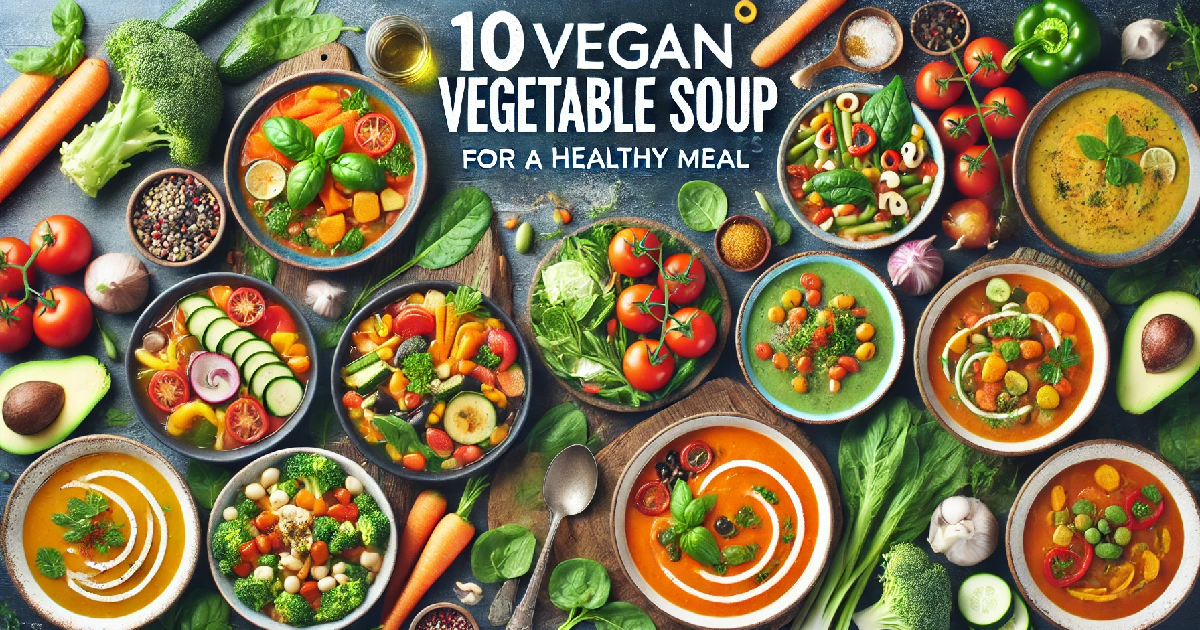Introduction
Starting a vegan restaurant is an exhilarating venture in today’s dynamic food industry. With growing awareness about plant-based diets and their numerous benefits, consumers are increasingly seeking vegan dining options. This comprehensive guide will take you through the essential steps to start your vegan restaurant, from initial planning to grand opening.
Understanding the Vegan Market

Market Trends and Demographics
The vegan market is expanding rapidly. In the United States alone, 5% of consumers adhere to a vegan diet. Understanding your potential customer base is essential for developing a successful restaurant concept.
Researching Consumer Preferences
Investigate what your target audience prefers regarding menu options, dining experiences, and sustainability practices. This research will guide your business decisions and help you cater to your customers’ needs effectively.
Key Statistics
| Metric | Percentage |
|---|---|
| US consumers on a vegan diet | 5% |
| Expected market growth by 2027 | $15.7 billion |
Developing Your Vegan Restaurant Concept

Menu Planning and Culinary Education
Running a restaurant requires a deeper understanding of large-scale food preparation and business management. Consider enrolling in courses focused on Plant-Based Culinary Arts to enhance your skills in menu design, purchasing, and foodservice management.
Defining Your Restaurant Concept
Decide on the type of vegan restaurant you want to open. Will it be a fast-casual café, a fine dining establishment, or a trendy bistro? Your concept should align with your target demographic and location.
Example Concepts:
- Fast-Casual Café: Quick service, affordable, and convenient. Ideal for urban areas with high foot traffic.
- Fine Dining: Elegant atmosphere, premium pricing, and gourmet vegan cuisine. Suitable for affluent neighborhoods.
- Trendy Bistro: Casual yet chic, offering a unique dining experience with seasonal and locally sourced ingredients.
Crafting Your Unique Selling Proposition (USP)
Identify what will make your vegan restaurant stand out. It could be a unique dish, a focus on sustainability, or an exceptional dining experience. Your USP will be crucial in attracting and retaining customers.
Creating a Business Plan
Business Planning Essentials
A solid business plan is the foundation of any successful restaurant. Outline your business goals, target market, competitive analysis, marketing strategies, and financial projections. This plan will be essential when seeking funding.
Financial Planning and Funding
Starting a vegan restaurant can be costly, with initial expenses ranging from $175,500 to $750,000. Explore various funding options, including bank loans, grants, and private investors. Don’t forget to consider funding from animal rights and wellness groups passionate about veganism.
Budget Breakdown:
| Expense Category | Estimated Cost |
|---|---|
| Lease and Renovations | $50,000 – $250,000 |
| Kitchen Equipment | $30,000 – $100,000 |
| Operating Expenses | $20,000 – $75,000 |
| Marketing and Promotion | $10,000 – $50,000 |
| Miscellaneous | $5,000 – $25,000 |
Securing Funding
Consider diverse funding sources:
- Bank Loans: Traditional loans can provide substantial funding but require a solid credit history and collateral.
- Grants: Look for grants aimed at small businesses, especially those promoting sustainable and plant-based initiatives.
- Private Investors: Engage with investors who are passionate about veganism and sustainability.
- Crowdfunding: Platforms like Kickstarter can help raise funds while creating a buzz about your restaurant.
Location and Setup

Choosing the Right Location
Your restaurant’s location can significantly impact its success. Look for areas with high foot traffic or ample parking. Ensure the space aligns with your vision and needs, such as having enough room for kitchen equipment and dining areas.
Key Considerations for Location:
- Foot Traffic: High foot traffic areas can increase visibility and customer flow.
- Accessibility: Ensure the location is accessible to your target demographic.
- Space Requirements: Consider the size of the kitchen, dining area, and storage space.
- Neighborhood Demographics: Choose a location that aligns with the lifestyle and preferences of local residents.
Designing the Dining Space
Create an inviting atmosphere that reflects your restaurant’s concept. Consider using sustainable materials and eco-friendly decor to attract environmentally conscious customers. Your dining space should be comfortable and visually appealing.
Interior Design Tips:
- Sustainable Decor: Use recycled materials, second-hand furniture, and eco-friendly products.
- Ambiance: Lighting, music, and color schemes should enhance the dining experience.
- Functional Layout: Ensure a smooth flow between the kitchen, dining area, and service stations.
Legal Requirements and Permits
Navigating Regulatory Requirements
Before opening, ensure you have all necessary permits and licenses, including a business license, certificate of occupancy, and health department approvals. Consulting a lawyer who specializes in small businesses can help you navigate these legalities smoothly.
Essential Permits and Licenses:
- Business License: Authorizes you to operate legally.
- Certificate of Occupancy: Ensures the building meets safety codes.
- Health Department Permit: Confirms compliance with health and safety regulations.
- Liquor License: Required if you plan to serve alcohol.
Navigating Legalities
- Small Business Association: Seek assistance from local small business associations for guidance and mentorship.
- Legal Counsel: Hire a lawyer to ensure compliance with all legal requirements and to handle any legal issues that arise.
Sourcing Ingredients and Equipment

Building Supplier Relationships
Form partnerships with local farmers and vegan food producers. These relationships can help you source high-quality, organic ingredients at competitive prices. Regularly visit farmers’ markets and natural food stores to stay connected with your community.
Example Supplier Partnerships:
- Local Farmers: Source fresh produce directly from local farms.
- Specialty Food Producers: Partner with companies that specialize in vegan cheeses, meats, and other products.
- Organic Suppliers: Ensure your ingredients meet organic standards.
Purchasing Equipment
Invest in essential kitchen equipment like ovens, refrigerators, and commercial dishwashers. Your equipment should meet the demands of your menu and ensure efficient operations.
Essential Kitchen Equipment:
- Oven: For baking and roasting.
- Refrigerator: To store perishable ingredients.
- Commercial Dishwasher: Ensures quick and efficient cleaning.
- Flat Top Grill: Ideal for cooking a variety of vegan dishes.
Marketing and Promotion
Developing a Marketing Strategy
Create a robust marketing plan to attract customers. Utilize social media platforms, local advertising, and partnerships with influencers to spread the word about your new vegan restaurant. Highlight unique aspects of your restaurant, such as sustainable practices or exclusive menu items.
Effective Marketing Channels:
- Social Media: Use platforms like Instagram, Facebook, and Twitter to engage with your audience.
- Local Advertising: Place ads in local newspapers, magazines, and online directories.
- Influencer Partnerships: Collaborate with vegan influencers to reach a broader audience.
Engaging with the Community
Host events, offer cooking classes, or collaborate with local businesses to increase your restaurant’s visibility and build a loyal customer base. Engaging with the community can drive word-of-mouth referrals and repeat business.
Community Engagement Ideas:
- Farmers’ Market Booths: Showcase your dishes at local markets.
- Cooking Workshops: Teach the community how to prepare vegan meals.
- Sustainable Initiatives: Partner with environmental groups to promote sustainability.
Digital Marketing Strategy
- Website Development: Create a user-friendly website with online ordering capabilities.
- SEO Optimization: Optimize your website with keywords like “vegan restaurant,” “plant-based dining,” and “sustainable cuisine.”
- Email Marketing: Build an email list to keep customers informed about promotions, events, and new menu items.
Operating Your Vegan Restaurant
Staff Training and Development
Ensure your staff is well-trained in vegan cuisine, customer service, and sustainability practices. Regular training sessions can help maintain high standards and improve customer satisfaction.
Key Training Areas:
- Menu Knowledge: Staff should be familiar with all menu items and ingredients.
- Customer Service: Emphasize the importance of friendly and efficient service.
- Sustainability Practices: Educate staff on waste reduction, recycling, and energy conservation.
Operational Efficiency
Streamline your operations to ensure smooth and efficient service. Implement systems for inventory management, order processing, and customer feedback.
Operational Tips:
- Inventory Management: Use software to track inventory and reduce waste.
- Order Processing: Implement a reliable POS system for quick and accurate order processing.
- Customer Feedback: Encourage feedback and use it to improve your services.
Ensuring Sustainability and Ethical Practices
Commitment to Sustainability
Incorporate sustainable practices into every aspect of your restaurant. From sourcing local, organic ingredients to reducing waste and using eco-friendly packaging, your commitment to sustainability will resonate with your customers and enhance your brand’s reputation.
Ethical Sourcing
Ensure all your ingredients are ethically sourced. Partner with suppliers who adhere to fair trade practices and prioritize animal welfare. This commitment will appeal to ethically-minded customers and set your restaurant apart.
Waste Reduction Strategies
Implement strategies to minimize waste, such as composting, recycling, and offering smaller portion sizes to reduce food waste. Educate your staff on these practices to ensure they are effectively carried out.
Building a Loyal Customer Base
Customer Loyalty Programs
Develop a customer loyalty program to reward repeat customers. Offer discounts, free items, or exclusive events to encourage them to return and spread the word about your restaurant.
Personalized Customer Experience
Create a personalized dining experience by remembering regular customers’ preferences
and offering tailored recommendations. This attention to detail can significantly enhance customer satisfaction and loyalty.
Engaging Social Media Presence
Maintain an active and engaging social media presence. Share behind-the-scenes content, customer testimonials, and special promotions to keep your audience connected and excited about your restaurant.
Measuring Success and Adapting
Tracking Key Metrics
Monitor key performance indicators (KPIs) to measure your restaurant’s success. Track metrics such as customer satisfaction, sales figures, and social media engagement to understand what’s working and where there’s room for improvement.
Customer Feedback
Regularly seek feedback from your customers to understand their dining experience. Use this feedback to make necessary adjustments and continuously improve your service and offerings.
Staying Current with Trends
Stay updated on the latest trends in the vegan and restaurant industries. Adapt your menu, marketing strategies, and operations to stay relevant and meet evolving customer preferences.
Conclusion
Starting a vegan restaurant is a rewarding endeavor that combines passion with business acumen. By following these steps and staying committed to your vision, you can create a successful and impactful vegan dining experience. Remember to stay adaptable, as the food industry is constantly evolving. Keep learning, stay connected with your community, and strive to offer the best possible experience to your customers.
Frequently Asked Questions
1. How to start a vegan food company?
Starting a vegan food company involves several steps similar to opening a vegan restaurant. Begin with thorough market research to identify demand and competition. Develop a strong business plan outlining your unique value proposition, product line, target market, marketing strategies, and financial projections. Secure funding through investors, loans, or grants. Source high-quality, sustainable ingredients and develop partnerships with local suppliers. Obtain necessary permits and licenses, and establish a strong brand presence through effective marketing and community engagement.
2. Is the vegan industry profitable?
Yes, the vegan industry is highly profitable and growing rapidly. The global vegan food market is expected to reach $31.4 billion by 2026, driven by increasing consumer awareness about health, environmental sustainability, and animal welfare. Businesses that can effectively tap into this market with innovative products and strong branding can achieve significant profitability.
3. Is vegetarian restaurant profitable?
Vegetarian restaurants can be profitable, particularly as more consumers adopt plant-based diets for health and ethical reasons. Success depends on factors such as location, quality of food, customer service, effective marketing, and the ability to adapt to trends. Offering unique, high-quality dishes and a memorable dining experience can attract a loyal customer base and drive profitability.
4. What is the profit margin for a vegan restaurant?
The profit margin for a vegan restaurant can vary widely based on factors such as location, operating costs, pricing strategy, and customer volume. On average, restaurant profit margins range from 3% to 5%, but vegan restaurants can achieve higher margins by attracting a dedicated customer base, optimizing operational efficiency, and emphasizing sustainability and ethical practices.
5. Are vegan chefs in demand?
Yes, vegan chefs are in high demand due to the growing popularity of plant-based diets. Many restaurants and food companies are seeking skilled chefs who can create innovative and delicious vegan dishes. Culinary schools and professional training programs focused on plant-based cuisine are also increasing to meet this demand.
6. Is vegan food in demand?
Vegan food is in high demand, driven by rising consumer awareness about health, environmental sustainability, and animal welfare. The increasing availability of plant-based alternatives in supermarkets, restaurants, and food service establishments reflects this growing demand. Businesses that offer high-quality, innovative vegan products can capitalize on this trend and achieve significant growth.

























